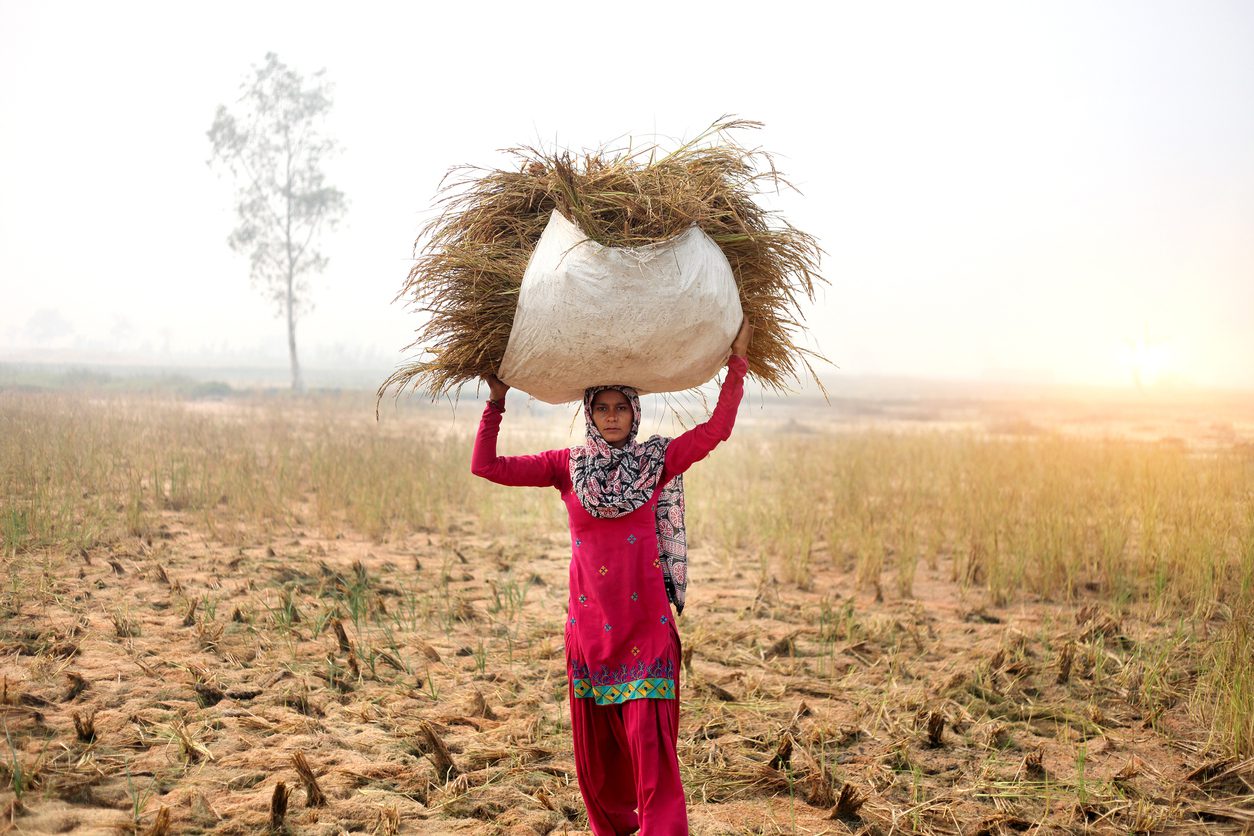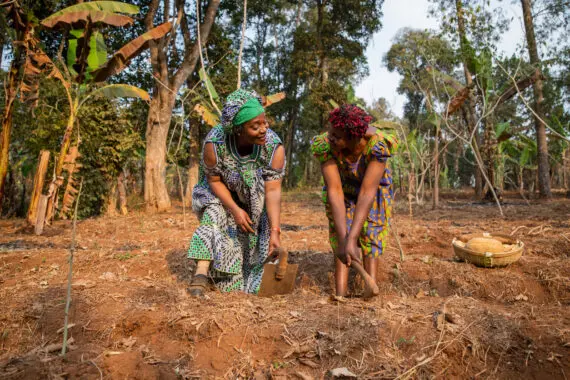June 2023 was the hottest June on record, worldwide, since record-keeping began in 1850. The past eight years have been Earth’s hottest years ever recorded. It is no secret that Earth’s climate is changing.
Another sign is that unusual weather patterns, including more severe natural disasters, are more common. Communities around the world are at greater risk of floods, hurricanes, droughts, wildfires, and other catastrophes.
As Bread for the World emphasizes, it is lower-income nations, most of whom produce very low levels of the greenhouse gases that cause climate change, that are suffering most. The United States is not immune, however. For example, many western states experienced severe drought in 2021 and 2022.
The world, particularly countries that are among the top producers of greenhouse gases, has done too little to stop or slow climate change. Countries and communities will continue to face climate impacts. Agriculture and food systems—which are often dependent on climate conditions like rainfall—are particularly vulnerable to these impacts. This is why Bread advocates for increased support for climate adaptation in lower-income countries, especially for communities dependent on farming. Climate adaptation includes a wide range of activities to help ensure that, despite facing climate impacts, people are able to feed their families, protect their health, earn a living, and otherwise thrive.
One promising way of enabling farmers to adapt is to invest in the research and development of seeds and crops that can survive and thrive under drought conditions. These are often called “climate-resilient” varieties. For example, maize (corn) is an important basic food in many countries. The International Maize and Wheat Improvement Center (CIMMYT), headquartered in Mexico, has been studying ways of formulating maize seeds that are climate resilient. As a result of the research, there is now a breed that has produced a harvest of between 5 percent and 25 percent more than standard maize, even under drought conditions.
CIMMYT is one part of the Consultative Group on International Agricultural Research (CGIAR), a global partnership aimed at conducting research for a food-secure future. The goal is to improve basic crops such as maize, wheat, and sorghum, so that smallholder farmers will have more secure livelihoods and their communities’ food systems will be more productive and inclusive.
Farming has always been an uncertain way of making a living. Even without climate change, so much is beyond human control. The majority of people in many lower-income countries—including the majority of people living with hunger—still work in agriculture. Agricultural insurance is a tool that can help farmers when climate extremes disrupt their crops or livestock. As with other types of insurance, farmers pay premiums, and later their insurance compensates them for climate-related losses. This ensures that farmers are able to keep feeding their families. They are also more likely to have what they need to farm in the next growing season.
Farming and other human endeavors have changed the landscape of many parts of the world, often in ways that make extreme, highly destructive flooding more likely. For example, in 2022, flooding in the Sindh Province of Pakistan was expected to destroy 80 percent of the rice harvest.
Deforestation, mainly to expand the land available for cattle ranching, has claimed about 17 percent of the Amazon Rainforest over the past 50 years. Trees and shrubs help prevent flash floods since more rainfall is absorbed into the ground. This is why planting or replanting trees and shrubs and integrating them into farmed lands—known as agroforestry—can help reduce the damage caused by the increased likelihood of flooding.
Climate-resilient agriculture, agricultural insurance, and agroforestry are just a few of many strategies for adapting to climate change that could potentially help smallholder farmers keep producing food for themselves and their communities, despite climate change.
But all of them require funding, and the world is not doing enough. Only about 1.7 percent of all climate finance goes to help smallholder farmers adapt to climate change. The U.S. and other high-income countries should increase funding for efforts that are so essential to ending hunger.
Jordan Teague Jacobs is co-director, Policy & Research Institute, with Bread for the World.



